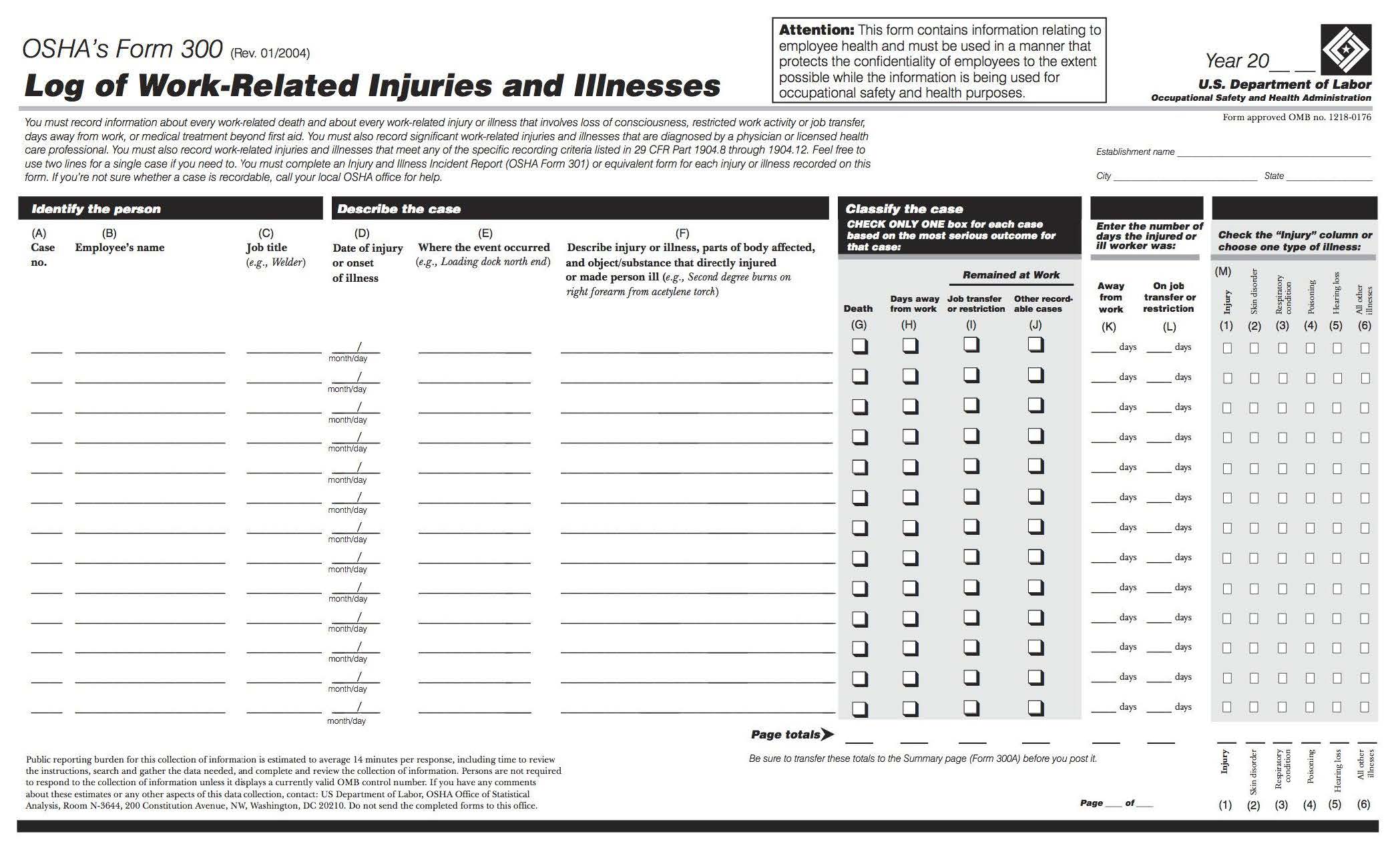By Ruth Kiefer, IH, ARM, Vice President of Loss Control
The year end is fast approaching and once again we will be addressing your record keeping questions for the next few months to come. MiOSHA requires that all recordable injuries be logged onto the MIOSHA Form 300 throughout the year, and when it comes to determining how many days away from work should you be logging on the form always results in questions. To better prepare you in completing the MiOSHA Form 300, let us review some of the most common questions regarding days away from work. Over the years, the questions below, have been some of our most common questions to date that we seem to get every year.
(1) How do I record a work-related injury or illness that results in days away from work?
When an injury or illness involves 1 or more days away from work, you must record the injury or illness on the MIOSHA 300 Log with a check mark in the space for cases involving days away and an entry of the number of calendar days away from work in the number of days column. If the employee is out for an extended period of time, you must enter an estimate of the days that the employee will be away, and update the day count when the actual number of days is known.
(2) Do I count the day on which the injury occurred or the illness began?
No. You begin counting days away on the day after the injury occurred or the illness began.
(3) How do I record an injury or illness when a physician or other licensed health care professional recommends that the worker stay at home but the employee comes to work anyway?
You must record these injuries and illnesses on the MIOSHA 300 Log using the check box for cases with days away from work and enter the number of calendar days away recommended by the physician or other licensed health care professional. If a physician or other licensed health care professional recommends days away, you should encourage your employee to follow that recommendation. However, the days away must be recorded whether the injured or ill employee follows the physician or licensed health care professional’s recommendation or not. If you receive recommendations from 2 or more physicians or other licensed health care professionals, you may make a decision as to which recommendation is the most authoritative, and record the case based upon that recommendation.
(4) How do I handle a case when a physician or other licensed health care professional recommends that the worker return to work but the employee stays at home anyway?
In this situation, you must end the count of days away from work on the date the physician or other licensed health care professional recommends that the employee return to work.
(5) How do I count weekends, holidays, or other days the employee would not have worked anyway?
You must count the number of calendar days the employee was unable to work as a result of the injury or illness, regardless of whether or not the employee was scheduled to work on those days. Weekend days, holidays, vacation days, or other days off are included in the total number of days recorded if the employee would not have been able to work on those days because of a work-related injury or illness.
(6) How do I record a case in which a worker is injured or becomes ill on a Friday and reports to work on a Monday, and was not scheduled to work on the weekend?
You need to record this case only if you receive information from a physician or other licensed health care professional indicating that the employee should not have worked, or should have performed only restricted work, during the weekend. If so, you must record the injury or illness as a case with days away from work or restricted work, and enter the day counts, as appropriate.
(7) How do I record a case in which a worker is injured or becomes ill on the day before scheduled time off such as a holiday, a planned vacation, or a temporary plant closing?
You need to record a case of this type only if you receive information from a physician or other licensed health care professional indicating that the employee should not have worked, or should have performed only restricted work, during the scheduled time off. If so, you must record the injury or illness as a case with days away from work or restricted work, and enter the day counts, as appropriate.
(8) Is there a limit to the number of days away from work I must count?
Yes. You may “cap” the total days away at 180 calendar days. You are not required to keep track of the number of calendar days away from work if the injury or illness resulted in more than 180 calendar days away from work or days of job transfer or restriction, or both. In such a case, entering 180 in the total days away column will be considered adequate.
(9) May I stop counting days if an employee who is away from work because of an injury or illness retires or leaves my company?
Yes. If the employee leaves your company for some reason unrelated to the injury or illness, such as retirement, a plant closing, or to take another job, you may stop counting days away from work or days of restriction or job transfer. If the employee leaves your company because of the injury or illness, you must estimate the total number of days away or days of restriction or job transfer and enter the day count on the MIOSHA 300 Log.
(10) If a case occurs in one year but results in days away during the next calendar year, do I record the case in both years?
No. You only record the injury or illness once. You must enter the number of calendar days away for the injury or illness on the MIOSHA 300 Log for the year in which the injury or illness occurred. If the employee is still away from work because of the injury or illness when you prepare the annual summary, estimate the total number of calendar days you expect the employee to be away from work, use this number to calculate the total for the annual summary, and then update the initial log entry later when the day count is known or reaches the 180-day cap.
There you have it, the top 10 asked questions we receive regarding days away from work. These questions are also in the MIOSHA Recordkeeping Standard if you needed a reference source. We do receive other questions as well, but remember, these were the most commonly asked when dealing with days away from work. This category seems to be the one that is more interpretive than the other categories. When you are completing your year end, and don’t know how to track the injury on the MIOSHA Form 300, please just call us and ask, we’d be happy to assist you with your answer.






